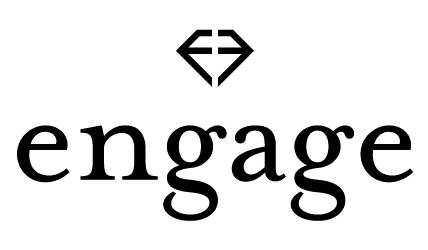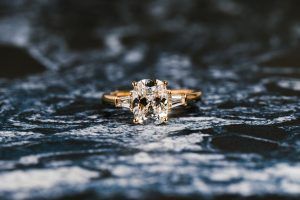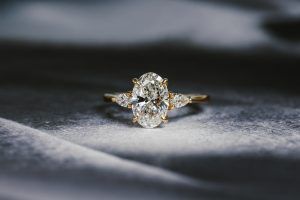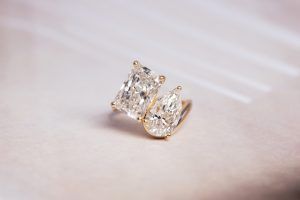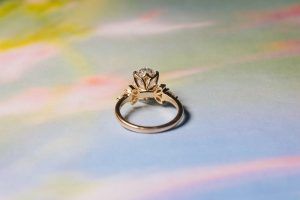
written by VJ
Round Cut Diamonds: Everything You Need to Know
We know there’s a lot of stuff out there that talks about picking the perfect round cut diamond. However, this is the best approach yet.
We’re going to talk about:
- The number one mistake that most people make when looking at round cut diamonds, and we’ll connect that to a simple formula that will help you maximize your value.
- Does the perfect cut exist?
- We’re gonna reveal the one superpower you have to pick the perfect round cut diamond. We’re going to show you how to activate it.
#1 mistake: focusing on the carat
Carat has nothing to do with size. It strictly tells us how much the diamond weighs.
Take a look at these three stones as an example. All of them are one carat. But, could you tell the vast difference in size?

In hindsight, carat is just weight. So what you really want to focus on is the diameter, the size. It’s the proper way to view it, not so much on the weight. For every weight class, you have a small, a medium, and a large. So the way to really maximize your value is, with everything else being equal, you need to only focus on the large diamond within every weight class.
Here’s another way to explain this simple formula for those who like charts. So we’re just looking at perfectly cut diamonds here, triple excellent. And so you’ll see the range for 0.9 carat and 1.0 carat. So look at the right. That diamond will be more expensive simply because the market recognizes it is bigger. The bigger it is, the more expensive it will be.
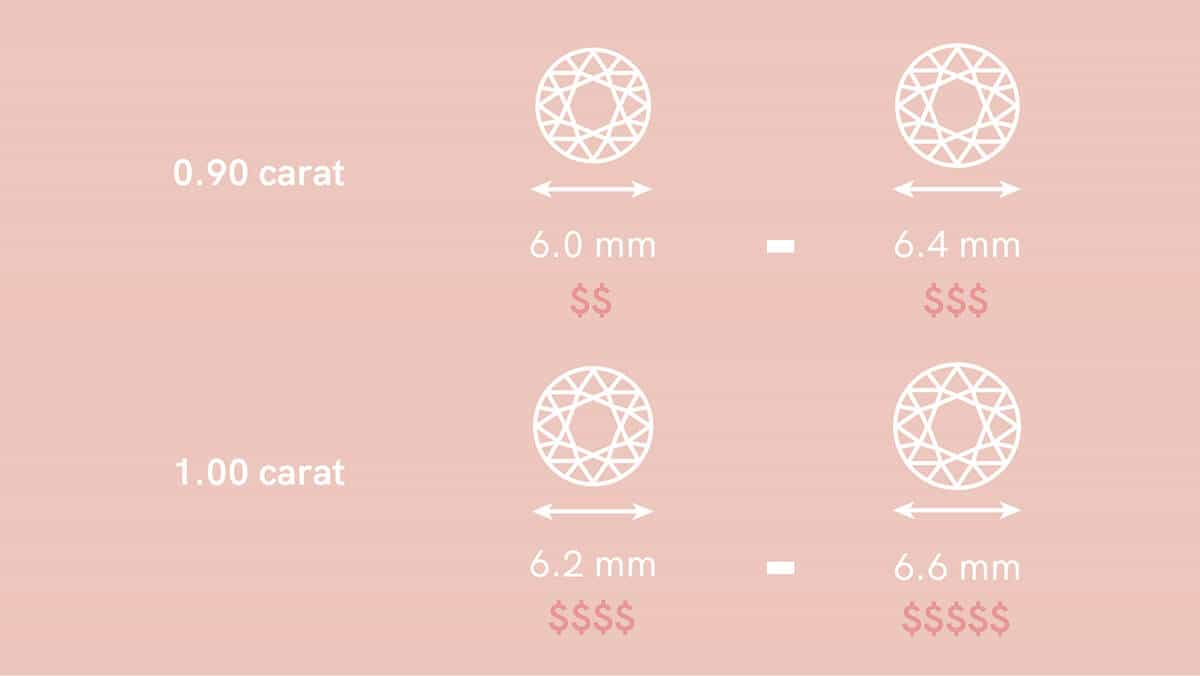
But look at this example. The large 0.9-carat diamond will be more expensive than a small 1-carat diamond. Which is ironic because you can get a 0.9 that looks bigger than a one-carat.
So the best way to get the maximum value, we always say, is going for the large. It doesn’t matter the weight in whatever weight class, but just go for the large, and you will maximize your value.
DISCLAIMER: Know that everything we’re discussing and all the diamonds we’re showing you are all excellent or ideal cut.
Okay, moving on.
In speaking of cut…
Does the perfect diamond cut even exist?
Let’s take a look at these two diamonds. You may notice that one of them sparkles more beautifully than the other one. You may also assume that the one that sparkles so magnificently has been cut to excellent ideal proportions. In this case, some of you guys will to try to figure out and start researching.
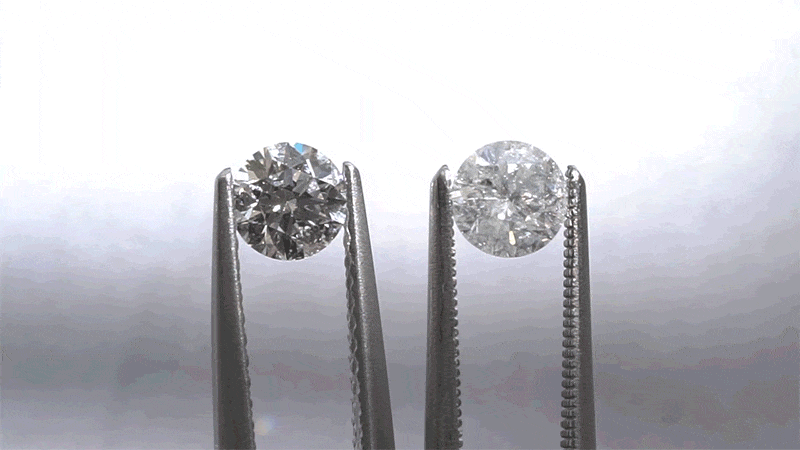
How do I find the perfect cut?
This is where the trouble begins.
This is where you’re going to start going down the rabbit hole. You will come across the sisters of shine: brilliance, scintillation, and fire. You’ll see charts, angles, and weird-looking pics that look like they’re taken through different scopes. In the end, you’re just going to get really confused.
Like, what the heck does any of this stuff mean?
Sisters of shine? Brilliance, scintillation, fire? Does the diamond sparkle or not? Which sisters are we really looking at? You can Google it if you’re really curious, but I’ll tell you this much—nobody in our industry even talks like that.
So why don’t we move on?
The other stuff people usually run into is all these different assessment models.
How can you tell whether the diamond is cut perfectly or not?
Let’s go over the first one, typically the chart model, which looks like this…
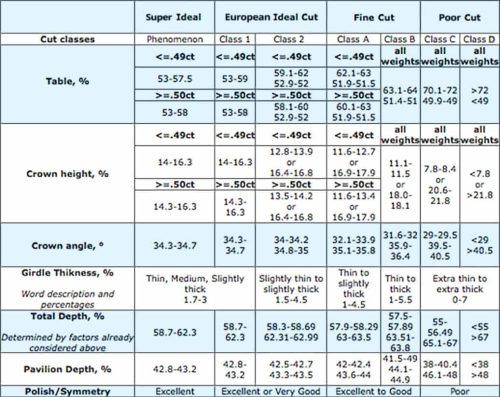
Or like this…
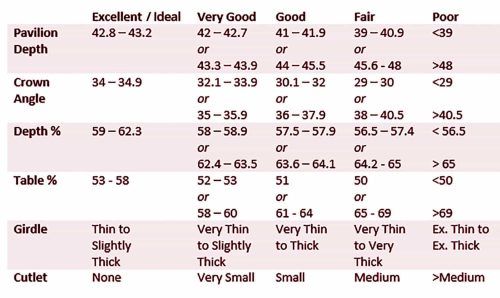
Where you look at different things, angles, and degrees. But here’s the issue: most of what you guys will learn about this is really theory posing as reality.
In theory, the cut is supposed to fit within these parameters, in this particular proportion. So that, you can tell that it’s beautifully cut.
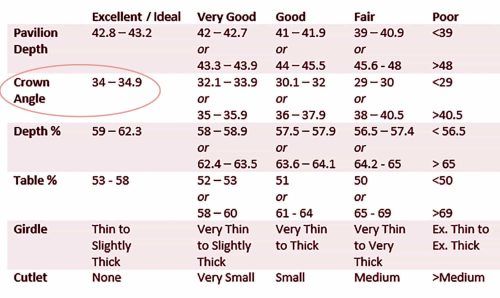
But…here’s the reality.

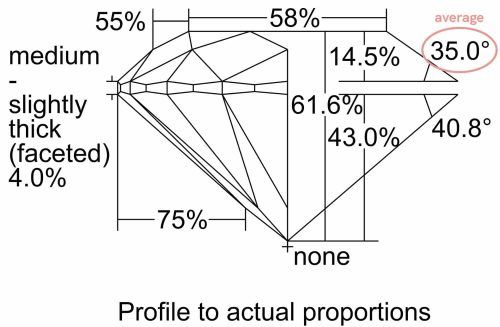
Here’s actually what’s behind these numbers. Most of you don’t understand how the industry derives these numbers. All these angles and everything are…just…an…average. It’s not a specific thing.
It’s a 3D model, but you’re looking at a 2D chart, and you’re looking at an average. So you can have two different diamonds that arrive at the same average. One has a lot more variation, and the other doesn’t.
Every diamond is hand-cut. So the culet, or the pointy bottom, will never be 100% centered, creating a deviation. And also, because of that, we always say, “Hold this loosely.”

The following assessment models that people run into are all these scopes: ASET, hearts and arrows, and different pictures. They look more like x-rays than they do diamonds.
A lot of people don’t realize how these pictures were created. It may seem that it was created by these super tech machineries with all these measurements and proportions, but look at what these are. They look like toys. One of them is basically put together with red foil. Is it a birthday party, or are we trying to make diamonds seem fancier?
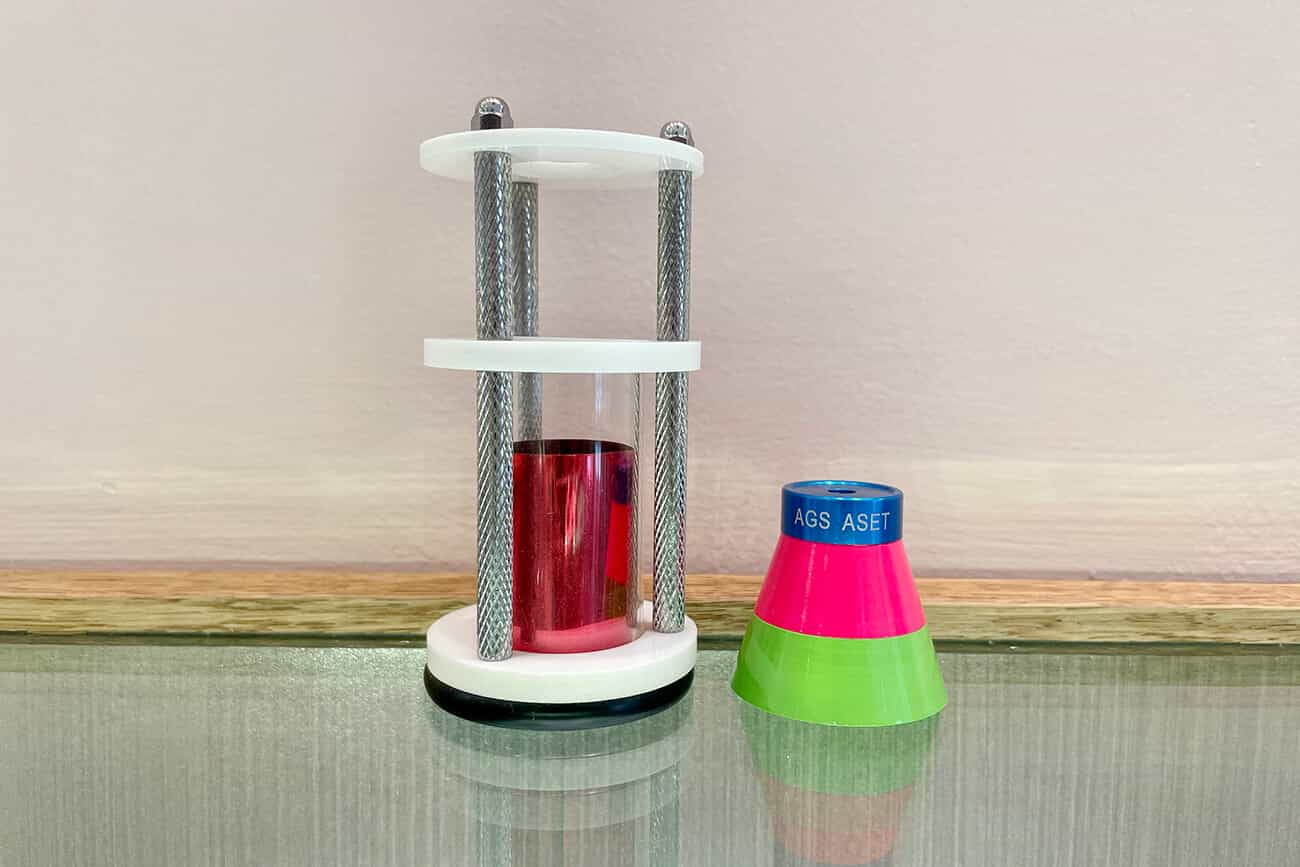
Yeah, and here’s the other thing: these pictures. Again, they’re taken by the people trying to sell you the scope. And so think of it as like they’re doctoring it. You can play around with the angle that it’s shot at, and so forth. But again, theory poses as reality. So what ends up happening is, well, a lot of people will spend hours and hours researching, researching, researching. All of it is on your time, on your dime. And, eventually, you’re just going to look at some pictures. Essentially, a spreadsheet is what you’re looking at, clicking, and checking out, and they will get you to buy one stone. And that’s what 99% of people who purchase online end up doing. This information, research-driven system is actually the Kryptonite to your superpower. Your superpower is what you wanna use to pick the right diamond for you.
So this begs the question. What is your superpower? The simple answer: Your vision.
So we’ve been created in an incredible way. Our body has over 11 million sensory receptors. But the biggest thing is that out of 11 million, about 10 million are actually dedicated to your vision. Some scientists even think that about half of our brain is used to just process visual data. What it basically means is that, when you’re looking at diamonds, your brain is taking in an incredible amount of information, way more than what’s really shown on a certificate, a graph, some scope. You’re taking in way more data than that. And because of that, you have to intentionally turn on your superpower.
But, here’s the silver lining…
You need to do 2 things to activate it
#1: View these diamonds side-by-side in the same environment
Don’t fall for the trick of thinking that, because you’re looking at them online, you’re watching videos of them, you’re actually comparing them. You must view them side-by-side in the same environment. If you don’t do that, it’s not going to work, and the reason is that if something is off in one of the stones, you’ll see it in the line-up.

#2: Look at diamonds without knowing what they are
Let your eyes lead you, not your brain.
We try 2 ways to amplify your superpower
#1: We show you diamonds under 3 different lighting conditions
These are by a window, flat fluorescent, and a direct form of light, which can be done in-person or online. This way, you can see what they look like in different environments, rather than just one.
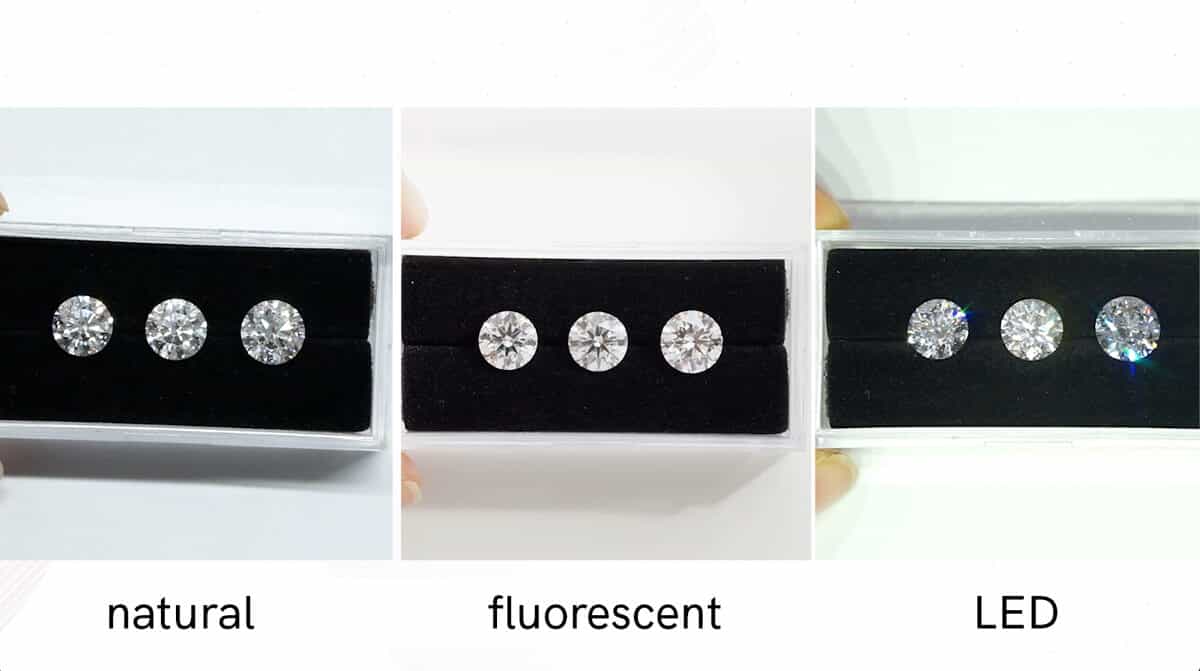
#2: We give you a curated selection
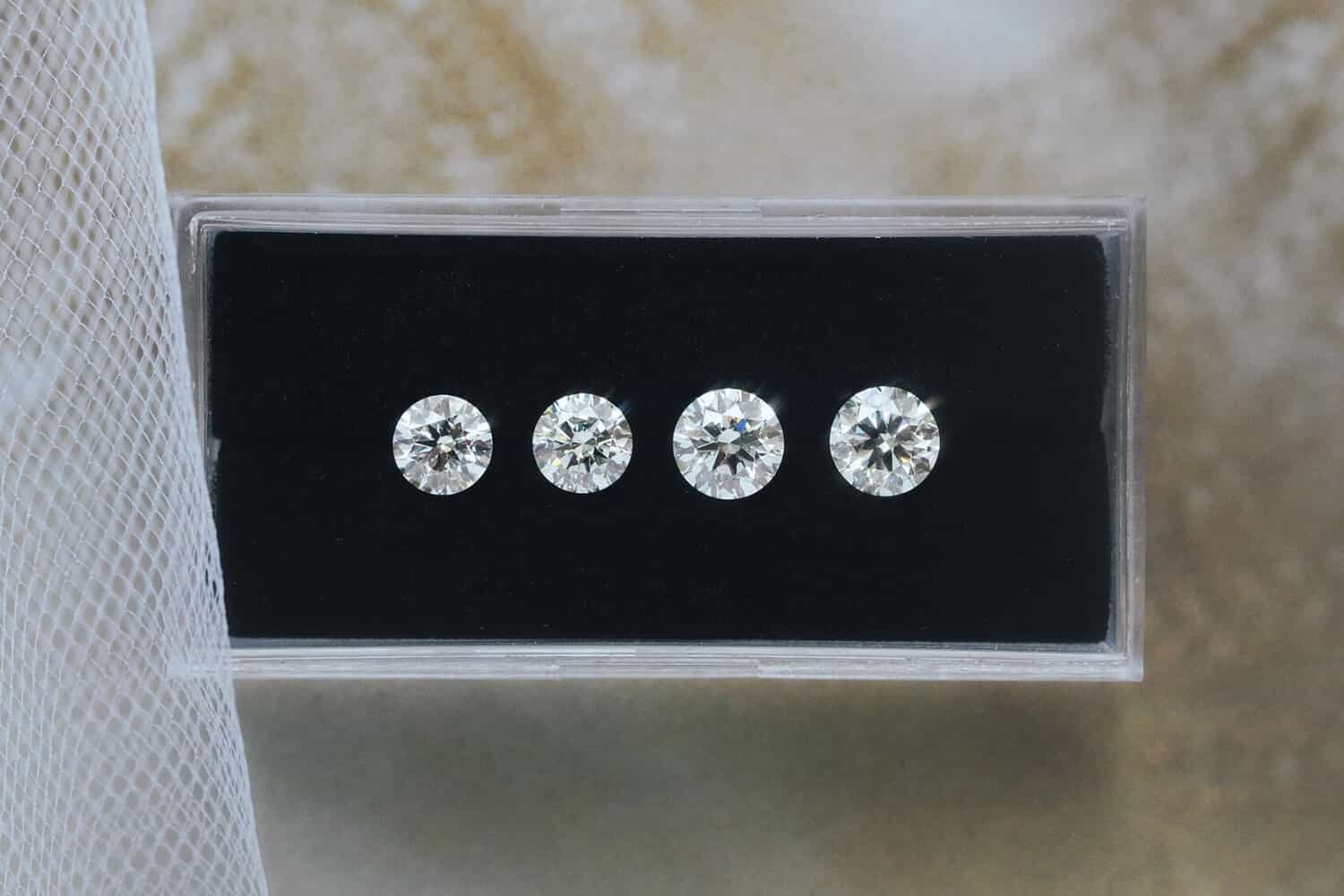
We filter out anything that would be detrimental.
In choosing the perfect round cut diamonds for you, we look at over 200 characteristics. We want to give you what we call a ‘safe selection’. They’re all top-notch stones, so you don’t have to worry; we want you to feel safe. We do that so, ultimately, you can trust yourself. You can give yourself the leap to start to experience and let yourself see what you see, and not be worried.
Am I going to pick something that’s off or doesn’t look right? They’re all gonna look right, but we always want to give you the choice and ability to see what you see.
just be open
So, rather than focusing on a specific color, clarity, or size, just be open.
Allow us to curate a beautiful selection with different colors, different clarities, and different sizes so that you can pick out what’s attractive to you. If we could leave you with just one thing, go and experience it. Use your superpower, ’cause you are the superhero here. 🦸
